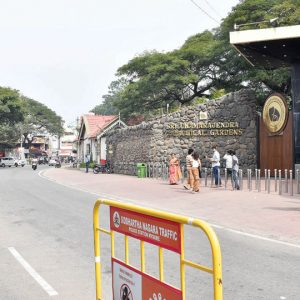Similar to many other styles and designs of attires, some still being favoured by different sections of society while the rest have gone into the pages of history, saree, also described a the Indian six yards has enjoyed identity derived from the names of exclusive towns and regions across the country. Sarees, in addition to their identities traced to the traditional places of origin, have acquired names based on the styles they are worn. The elderly among the womenfolk as well as seasoned traders in the time-honoured attire can reel off names of sarees in a long list — Dharmavaram, Dindigal, Narayanpet, Gadwal, Kanjeevaram, Molakalmuru, Mallika, Tongai, Tie ‘n’ dye and so on, not to forget Mysore Silk and Benaras Silk flash across the mind of those who are conversant with the world of sarees. The nine-yard fabric, still worn by orthodox sections in Tamil Nadu and also on special occasions in madisal style figures among many other styles associated with Maharashtra, Gujarat, Kodagu, Kerala, Bengal, to name a few. Thus goes the saree saga, now on the wane.
Fashion has its own inbuilt obsolescence, the humble lungi keeping company with the gorgeous saree on its journey towards extinction. In order to remain in business, both must keep changing. The two attires owe it to the land’s cinema for their survival against the ubiquitous salwar-kameez and jeans, favoured by both urbanites and the rustics. Wearing the saree exposing the navel, adorning see-through fabric and draping to reveal the anatomy are common sight.
The seamless saree being the unparalled breathable textile can also be breath-taking as fantasised by many Kannada novelists and poets of the past. In the days within reach of memory, the gradual traditional makeover of the attire of the female species from langa in sub-teens, half-saree (langa-daavani) during teens and finally to saree is also seamless generating dreamy feelings in the beholder — the male species in particular. However, with the grandmas and aged aunts not anywhere around in most urban households given the wholesale adoption of unisex dress code by youth as well as salwar-kameez even by the greying womenfolk seen in public domain and also work-stations, saree seemed to have joined the list of endangered animals on brink of extinction.
The supremacy of saree, whether made of cotton, silk, synthetic and lookalikes seems to be getting resurrected going by a Mysuru-based report in a popular daily “Bajirao film inspires girls to try out traditional saree styles.” In short, if the saree fever catches the imagination of females, both weavers of the fabric and traders in multiplicity of kinds, mentioned earlier in this column can look forward to booming scenario of saree-clad dames. One cannot ask for more.








Recent Comments